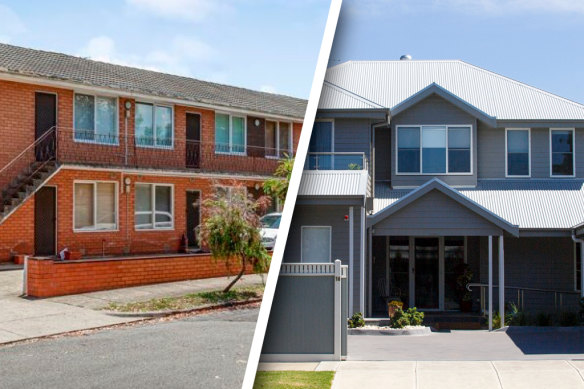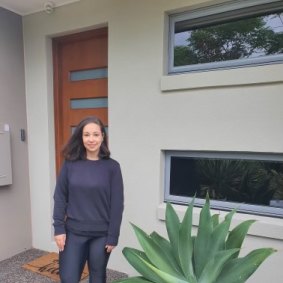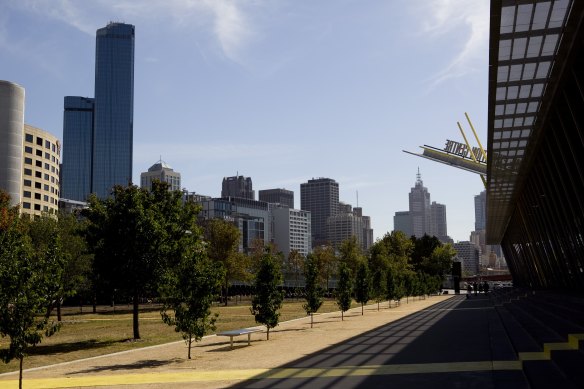This was published 2 years ago
How the second step on Melbourne’s property ladder became a giant leap
By Melissa Heagney
Melbourne apartment owners looking to sell and upgrade to a house face a yawning price gap five times wider than it was two decades ago.
It now costs 86 per cent more to buy the average house than the average apartment, the widest gap ever recorded in Melbourne, and a price difference of $508,266, on Domain figures.

The step from apartment to house has become a giant leap for Melburnians.
In mid-2001, houses cost only 17 per cent more than apartments on average, a price gap of $33,691.
The second step on the property ladder has become more of a leap, meaning buyers are forced to stretch their budgets and borrow more, or compromise and buy a townhouse instead.
Domain chief of research and economics Nicola Powell said the difference in prices had accelerated particularly during COVID-19 and was making it “far more difficult” for owners to upgrade.
Since the end of 2019, the price difference jumped by 24 percentage points from 62 per cent to 86 per cent, as detached house prices boomed when buyers scrambled to find a bigger home through Melbourne’s COVID-19 lockdowns.
Last year alone, Melbourne’s house prices soared by 18.6 per cent to a record median of $1,101,612, while unit prices rose by just 6 per cent to a median $593,387.
“There’s been such a big swing towards house prices which has really catapulted during COVID-19,” Dr Powell said. “It will force house buyers to stay in an apartment for longer to save.”
Loan Market mortgage broker Daniel Koutzamanis said second-home buyers were struggling to afford a house in some of Melbourne’s pricier suburbs.
Buyers were stretching themselves to borrow more money for a house, even though they had the collateral of an apartment, or were compromising either by moving further away from the city or choosing a smaller property.
“It’s quite common,” Mr Koutzamanis said. “They’re buying townhouses or sometimes even a three-bedroom unit or a larger apartment before moving into a house.”
Mr Koutzamanis said the gap in house and unit prices was smaller in the outer west or south-east of Melbourne and larger in inner-city areas, but often buyers did not want to compromise on location.
Ronnie Lerman and her partner Anthony did not want to compromise on location, but did compromise on the type of property when they bought their four-bedroom townhouse in East Bentleigh late last year.

Ronnie Lerman outside the East Bentleigh townhouse she bought with partner Anthony.
The couple sold Ms Lerman’s unit in Brighton East to help with their deposit, and even with this financial bump, still struggled to afford a home in the area where Ms Lerman grew up and wanted to stay.
“We were looking for about 12 months prior to buying, and we went to auctions every weekend to get a feel for what was happening,” Ms Lerman said.
“Properties were going for $200,000 or $300,000 above the asking price, so we just started filtering properties that were [that amount] below our budget, otherwise we would be getting outbid and that was really demoralising.”
The couple were grateful to be able to get into the market and find a home where they could stay for some time and raise a family.
“We were in the fortunate position to already own a property, and I feel for young couples because it’s really hard to get into the market right now,” she said.

The gap between house and unit prices in Melbourne could tighten this year, Dr Powell says.Credit: iStock
Though buyers like Ms Lerman are struggling to make the shift from apartments to houses, Dr Powell said it may start to become easier this year.
The gap could start to tighten as lack of affordability and interest rate rises loom, and people are pushed towards buying smaller properties.
This was backed up by the latest predictions from NAB, which on Friday forecast that property prices would rise by 3 per cent in 2022, before falling by 10 per cent in 2023, as the Reserve Bank raised interest rates.
“What we know in [property] search behaviour is where people want to live doesn’t change, they change the property type where they want to live,” Dr Powell said. “That will drive buyers towards smaller properties that they can afford.”

People are now looking for a city pad, Cate Bakos said.Credit: Jessica Shapiro
Unit prices could also be boosted by people who had moved to an outer suburb or regional area during COVID-19, and now wanted a city pad near the office.
Melbourne-based buyer’s advocate Cate Bakos said she was already seeing a bounce back to the apartment market.
“I feel this year we might see the gap tighten, because people’s requirements have changed,” Ms Bakos said.
“Those that have gone to their country estates during COVID are taking up apartments in the city now to have somewhere to sleep after work.”